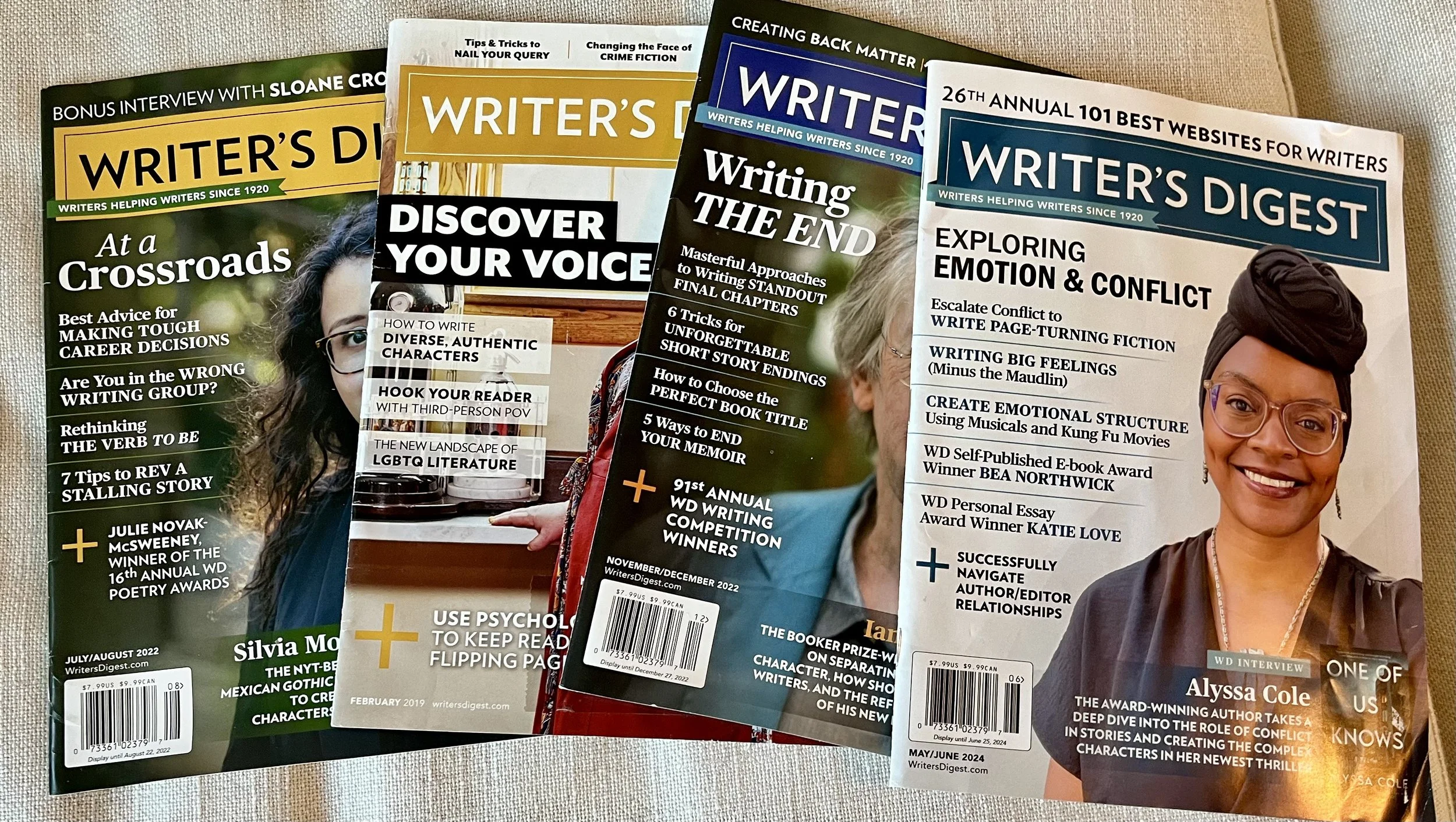How to Write Dialogue: Formatting, Fundamentals, and More
The rules around dialogue are somewhat complicated. The good news—it gets easier with practice.
In my teaching and writing coaching, I’ve noticed that many people—maybe even a majority—seem to go to great lengths to avoid using dialogue tags (he said, she said). That’s not a great solution. Here’s how to approach the topic.
Start Using Dialogue Tags
Anytime someone says something, use quotation marks around what they say, and usually, you need to use dialogue tags. The tag indicates who said what. Here are some examples.
Wrong: “Good morning.”
Right: “Good morning,” my boss said.
There’s no need to fear dialogue tags. Most professional language users—lawyers, technical writers, college presidents—consistently make errors in dialogue punctuation and formatting because no one writes dialogue other than fiction writers and sometimes journalists. So few people get to practice this skill until they start writing a lot of fiction or creative nonfiction.
If you need a little help, check out this guide on how to punctuate dialogue.
NOTE: Sometimes, you can get away with using fewer tags when it’s only two people, and they’re just going back and forth, but you still need them at the start of the conversation, and you need to use them sometimes along the way to orient the reader. If there are three or more people in a conversation, it’s very hard to use fewer tags because it’ll be unclear who’s talking.
Learn How to Introduce a New Speaker
Start a new paragraph when a new character speaks or nods in response (or another form of nonverbal communication).
“Good morning,” my daughter said.
“I’m not sure about that,” I said.
Remember: No Need for Alternatives to Said
Stick with said. In most cases, it’s fine to say “said.” Other acceptable tags include:
Asked
Responded
Demanded
Yelled
You don’t want the dialogue to draw attention to itself—it breaks the artifice and makes the reader think about the writer, not what’s happening on the page. Also, if the spoken words contain sufficient subtext, you don’t need to prompt the reader to understand the tone. The situation implies the tone.
We probably all remember a sixth-grade teacher who asked—no, insisted—that we use words other than “said.” She was wrong. Overfussy tags are usually distracting. The reader can usually infer tone from the words, the scene, or the nonverbal action you add to the sentence.
In addition, someone cannot “nod” or “smile” words as these gestures don’t make noise. It doesn’t mean you can’t include it.
Wrong example: “Good to see you,” he smiled.
Correct example: “Good to see you,” he said, and smiled.
Make Your Dialogue More Interesting
When someone is talking to us, we do not just hear words in our ears. It’s not a podcast. All kinds of other cues and clues are going on in the room, including sensory features, setting, and nonverbal hints. These add up to action beats within and between various lines of dialogue.
Good dialogue beats will have:
Setting: Woven-in sensory details—the curtain billowing in the rainy wind, the garbage bag blowing across the street.
Interiority: What the point of view character is thinking or feeling.
Gestures and blocking: Facial expressions, hand movement, how people move around the room, and other nonverbal communication. All, again, through the perspective of the POV character.
The lack of dialogue tags and “filling” often leads to the author performing exposition through character dialogue. This gets awkward, fast. So get in the habit of filling in your dialogue, or at least every other sentence.
Interesting Dialogue Example
Here’s a scene from a beloved Lorrie Moore’s short story, “People Like That Are the Only People Here” — I’ve removed the “filling” around the dialogue:
"He's big on lights these days," explains the Mother.
"That's okay," says the Surgeon. "Let him play with it."
"What we have here is a Wilms' tumor," says the Surgeon.
"Wilms'?" repeats the Mother. "Is that apostrophe s or s apostrophe?"
"S apostrophe," says the Surgeon. "I think. A malignant tumor on the left kidney."
Here it is with the dialogue beats and information added in:
"He's big on lights these days," explains the Mother.
"That's okay," says the Surgeon, nodding toward the light switch [gestures/movement]. "Let him play with it." The Mother goes and stands by it, and the Baby begins turning the lights off and on, off and on. [gestures/movement]
"What we have here is a Wilms' tumor," says the Surgeon, suddenly plunged into darkness [setting doubling as interiority]. He says "tumor" as if it were the most normal thing in the world. [interiority—this is the mother’s thought, even if it’s not identified as such]
"Wilms'?" repeats the Mother. The room is quickly on fire again with light, then wiped dark again. Among the three of them here, there is a long silence as if it were suddenly the middle of the night. [setting doubling as interiority] "Is that apostrophe s or s apostrophe?" the Mother says finally. She is a writer and a teacher. Spelling can be important—perhaps even at a time like this, though she has never before been at a time like this, so there are barbarisms she could easily commit and not know. [interiority again]
The lights come on: the world is doused and exposed. [setting doubling as interiority]
"S apostrophe," says the Surgeon. "I think." The lights go back out, but the Surgeon continues speaking in the dark. "A malignant tumor on the left kidney."
As you can see, even this short snippet is now rich with emotion and dark humor. We understand the mother’s shock and terror as the lights flash on and off. The baby plays innocently yet controls the room’s light. The everyday blocking and gestures are at odds with the scene’s gravity.
Pros and Cons of Writing Dialogue
What dialogue Does well:
Making an otherwise-abstract conflict or problem more vivid: You can describe a fight or really show a verbal fight. One is likely more interesting and intense than another.
Bringing abstract character traits to life: An “angry man” is vague. But when you bring his vicious words and empurpled face to life in the scene, readers understand the reality of living with this fellow.
Entertaining the reader: An unfulfilled desire, a frustration, or a misunderstanding can engage the reader, especially when not expressing that desire effectively through interaction and dialogue. Snappy, witty repartee is also always appreciated by the reader.
What dialogue Does NOT do well:
Providing orienting information: This is sometimes called “exposition through dialogue” and is often a disaster. For example: “It’s so good to see you, my brother, the most respected physician in New York City. I haven't seen you in five years.” That’s not how people talk.
Advancing time: One minute of lived experience is about one page of dialogue in real time. A 60-page screenplay is about a 60-minute TV show. The pacing follows the laws of the time-space continuum, unfortunately. If you need to get a lot done in very few pages, minimize dialogue or only present brief dialogue snippets.
Providing context in rapid- or complex-paced scenes: It’s difficult to have people talking while complicated physical things occur. Try writing a scene where two characters are talking AND sparring in their boxing gym. Fine in movies, but tough to keep the dialogue moving on the page in tandem with a coherent physical situation.



